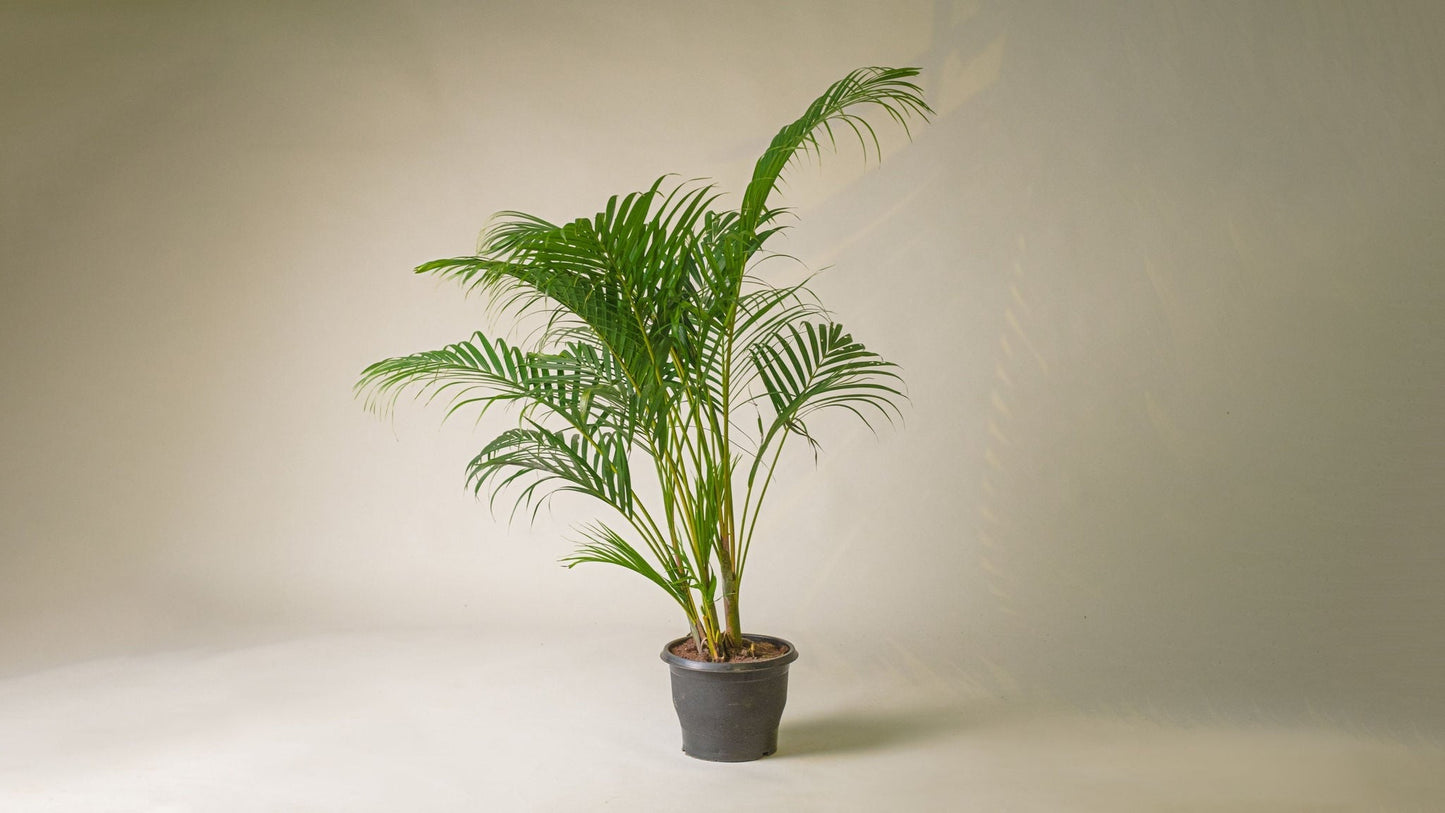Plantparadise
Areca Palm
Areca Palm
Couldn't load pickup availability
Areca Palm (Dypsis lutescens), also known as Butterfly Palm or Golden Cane Palm, is a popular and attractive tropical plant that belongs to the Arecaceae family. It is native to Madagascar and is widely cultivated as an ornamental plant in many regions with a warm, humid climate. Areca palms are commonly used as indoor houseplants, but they can also thrive outdoors in suitable environments.
Here's a description of the Areca Palm:
-
Appearance: Areca palms are characterized by their graceful and elegant appearance. They feature multiple slender, arching stems that grow from a central point, resembling a clump or cluster. The stems are smooth and golden-yellow in color, hence the name "Golden Cane Palm."
-
Leaves: The leaves of the Areca Palm are pinnate, which means they have multiple leaflets arranged on each side of the stem, resembling a feather. The leaflets are lance-shaped and grow in pairs, giving the plant a lush and tropical appearance. The color of the leaves is typically bright green, adding to its aesthetic appeal.
-
Height: Indoors, Areca Palms usually grow to a height of about 6 to 7 feet (1.8 to 2.1 meters). In their natural outdoor habitat, they can reach greater heights, often reaching up to 20 feet (6 meters) or more.
-
Light requirements: Areca Palms thrive in bright, indirect light. They prefer filtered sunlight or partial shade, making them well-suited for indoor settings near a window or outdoor spaces with dappled sunlight.
-
Watering: These palms prefer consistently moist soil, but they do not like to sit in waterlogged conditions. Allow the top inch or so of the soil to dry out between waterings, and be sure to provide good drainage to prevent root rot.
-
Temperature and humidity: Areca Palms prefer warm temperatures and high humidity levels. They can tolerate temperatures as low as 50°F (10°C) but thrive in temperatures between 65°F to 75°F (18°C to 24°C). Regular misting can help maintain adequate humidity, especially in drier indoor environments.
-
Maintenance: Proper care includes regular pruning to remove old or damaged fronds, occasional fertilization during the growing season, and repotting every few years when the plant outgrows its container.
-
Air-purifying properties: Areca Palms are known for their air-purifying abilities, helping to filter out toxins from the air and improving indoor air quality.
It's essential to note that while Areca Palms are relatively low-maintenance, they can be sensitive to certain conditions. Overwatering, exposure to cold drafts, or direct sunlight can lead to various issues, such as yellowing leaves or pest infestations. By providing the right care and environment, you can enjoy the beauty of the Areca Palm as a stunning addition to your home or garden.
Materials
Materials
Shipping & Returns
Shipping & Returns
Dimensions
Dimensions
Care Instructions
Care Instructions








